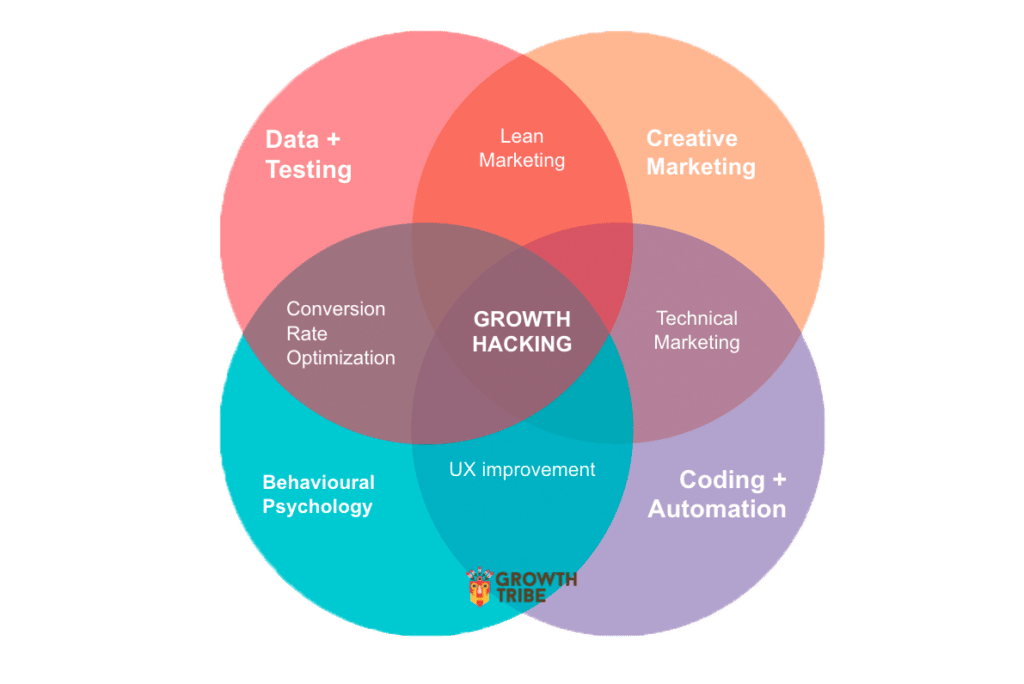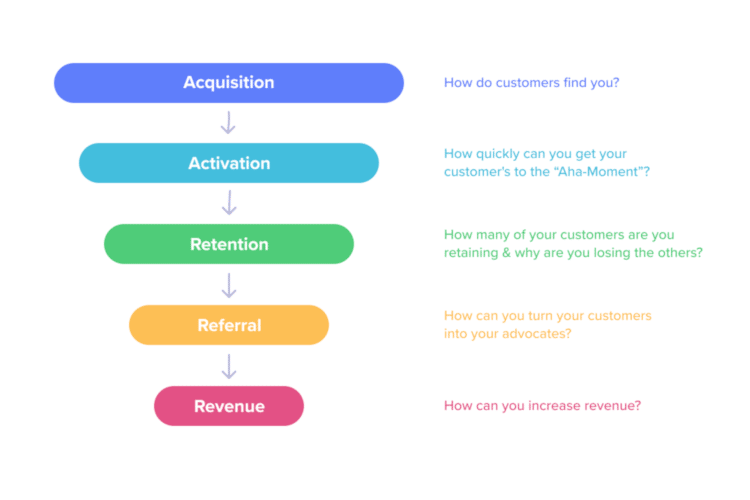Lately, I’ve been thinking about the companies I’ve worked with and what separates those who do marketing well and those who continue to struggle. Marketing isn’t what it used to be when the focus was all about awareness, and the effectiveness of your efforts was difficult to track.
Digital marketing has changed so much. More specifically, technology has changed everything in marketing. It has changed how we interact, advertise, and push to develop meaningful connections with our target/existing customers every day.
The majority of the companies I work with are tech startups. Often, they are producing revenue and product adoption, but they come to me because they don’t see the ROI with their marketing efforts. So what exactly is wrong here?
There could be a long list of issues, but I want to simplify it a bit and identify what I see as a recurring theme for this blog post. You aren’t seeing the marketing ROI you want? That’s because you aren’t implementing the right practices, having the subject experts in place, and using the tools to measure everything.
What is data-driven marketing?
Here’s why data-driven marketing is so important:
- 64% of marketing leaders report that data-driven strategies are vital in today’s economy.
- Data-driven marketing increases ROI, with campaigns that leverage data-driven personalization reporting 5-8x ROI for their campaign spend.
- 92% of leading marketers believe using first-party data to continuously build an understanding of what people want is critical to growth.
- Businesses lose up to 20% of revenue due to poor data quality practices.
More importantly, what does all of this tell you? In the world of digital marketing, data plays an enormous role in helping you best understand what’s working, what isn’t, and what needs improvements. And, of course, you need to be organized enough to collect the data in the first place. To pull this off, you need to be focused and execute the tactics that support your overall strategy.
In tech startups, the whole approach of GSD (get shit done), break things, move fast, and then improve is definitely one that many embrace. Making this approach specific to marketing, it’s all about growth hacking. Yeah, that buzz word can make many roll their eyes, but those who are implementing it correctly are seeing massive growth, i.e., a 10x plus ROI.
What is growth hacking?
Growth hacking is all about making sure that every single initiative you implement should align with the notion of growth. In addition, the tweaks that you make to your tactical executions should be done promptly. Growth hacking is about collecting data that will help you figure out how to scale more cost-effectively in a short amount of time.
These short-term wins should be a part of the larger picture. For example, growth hacking to acquire new customers doesn’t mean that you only intend to keep them around for a couple of months. Instead, it’s about acquiring a lot of new customers in a short amount of time, while also ensuring that you retain them in the longer-term.

To be more specific, here’s how Optimzely defines growth hacking:
“Growth hacking (also known as ‘growth marketing’) is the use of resource-light and cost-effective digital marketing tactics to help grow and retain an active user base, sell products, and gain exposure. Think ‘hacking’ in terms of life hacks – those little shortcuts that make your life easier – rather than nasty bits of code that can ruin your computer and your life.
Growth hacking is most commonly associated with start-ups and small businesses, i.e. those organizations that don’t have a huge amount of cash to spare but need results quickly. However, it’s a scalable concept applicable to any online business keen to maintain the growth and retention of an active user base.
Growth hacking is like marketing in that its ultimate aim is customer acquisition or to encourage more people to use a particular product or service. However, because of its origins within the start-up community, it relies heavily on tactics that don’t involve spending massive budgets that larger businesses have access to.”
Why growth hacking is so important
Growth hacking should become a normal practice at your company and not just designated to one person or department. Truth be told, much of the responsibility will fall within marketing’s hands — but anyone who has anything to do with the buyer’s journey has to instill this practice in some way, shape, or form.
What does that mean? In short: teamwork makes the growth hacking dream work.
Collaboration as a team is critical so that everyone can report back their findings — both qualitatively and quantitatively. From there, you can continue to move in a cohesive direction that will achieve the larger business goals. Growth hacking also involves automating as much as possible, while personalizing the experience for potential/existing customers.
A great growth hacking plan needs a really great platform to handle everything from email to landing pages to social media. I love using Hubspot with my clients because it has so many capabilities and is fully scalable to grow with your organization. And since you can do almost everything within the same platform, it makes pulling data really easy. Set up your company’s Hubspot account here.
With that in mind, here are some clear stats that show the ROI that growth hacking can yield:
- A typical website conversion rate is about 2.35% on average. But the top 10% of companies are seeing 3-5x higher conversion rates than average.
- Companies see a 55% increase in leads when increasing their number of landing pages from 10 to 15.
- Companies whose conversion rates improved last year are performing, on average, 50% more tests and using 47% more methods to improve conversion.
- Using videos on landing pages can increase conversions by 86%.
If you aren’t using landing pages in your growth hacking plan, you are clearly missing out on potential leads and conversions. There are several tools available that make it easy for you to create landing pages which you can then test to make sure they are fully optimized.
If you don’t have a lot of experience, a great drag and drop tool can help you create a landing page quickly. I like Unbounce because it has hundreds of templates and makes it easy for anyone to create a great landing page. Sign up for your free 14-day trial here.
Instapage is another great drag and drop tool that really focuses on collecting valuable data through your landing pages so that you make smart decisions to increase engagement. Sign up for an account here.
If you are already pretty comfortable creating webpages, you can just use a hosting site like BlueHost or Kinsta to host your landing pages. BlueHost is the least expensive option, with plans starting at $3.95 a month and a free SSL certificate included. Register your domain with BlueHost here.
Kinsta plans start at $30 a month, but also come with more features, like free migrations and a hack fix guarantee. Learn more about their advanced features and sign up for an account today.
Create a growth hacking schedule and get focused
Don’t get bogged down by feeling like you have to try growth hacking techniques on tons of tactics all at once. Rather, focus on the tactical executions that will contribute to growth goals and then work on building out your growth hacking schedule.
There are different ways you can go about creating a growth hacking schedule that will help you log different experiment results and have different start and end dates for each. I typically prefer a project management tool like Monday, especially for larger teams. Monday has fully customizable templates that can fit any type of team. And with its visual interface, it makes it easy to see everything at a glance. Sign up for your account here.
If you don’t have the budget for a project management tool right now, you could also easily put something together in Google Sheets as well.

Here are the benefits of actually having a schedule:
- Everyone stays organized.
- If you run an agile marketing team, you can incorporate experiments into each sprint.
- Easily track changes and results.
- Have a place to input all of the ideas and experiments you want to run.
- Do controlled experiments so you aren’t running a ton at once, but are isolating variables accurately — remember, data quality is super important.
Align executions to the buyer’s journey
The obvious point that we haven’t covered yet is that you should understand your target personas and their purchase behavior and journey. Keeping the buyer’s journey in mind is going to help you a ton — especially when it comes to really figuring out ways you’re going to push for growth and then scaling it.
One of the best ways to go about doing this is to identify the lifecycle stages of the buyer journey as done so in this example:
- Acquisition – from what channels do users come from? This stage is your first contact with customers.
- Activation – what percent of them have a satisfying initial experience? This is the stage in which your users actually try your product.
- Retention – do they come back? The main goal here is to keep customers locked to your product or service.
- Referral – do they like it enough to recommend it to their friends? This stage focuses on growth.
- Revenue – can you monetize your product? This stage starts when a customer buys your product or service.

Wrapping it up and over to you
What I love about growth hacking is that there isn’t a cookie-cutter way to push for that 10x plus ROI. Rather, if you are willing to put in the time to experiment until you see what works, then you’re more than likely going to continue on that trajectory. There will be some faster iterations than others, but what’s most important is that you track and measure it all. I can’t emphasize enough how important the data will be to help you make better decisions.
Outside of the data sets themselves, you have to be super clear on what you’re trying to achieve. Outline specific KPIs you’ll be tracking and be clear about how each experiment will not only push for growth but also retention. In other words, push for short-term and long-term wins.
Disclosure: Please note that some of the links above are affiliate links. I only recommend products and services that I use and stand behind, and if you decide to try them, I will earn a commission at no cost to you. Doing so helps me run this blog and provide free content for you, my readers.
